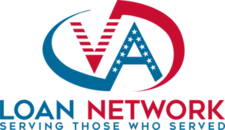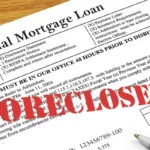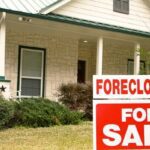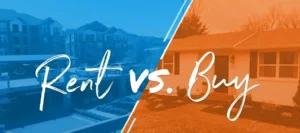The U.S. Department of Veterans Affairs (VA) recently announced the termination of its Veterans Affairs Servicing Purchase (VASP) program, effective May 1, 2025.
This decision has sparked many questions and concerns among the Veteran community, especially for those struggling to meet mortgage payments on VA-backed loans.
According to the VA, over 81,000 active-duty service members and Veterans are currently behind on payments for VA-backed home loans, which places them at a heightened risk of foreclosure.
As of now, the VASP program has acted as a lifeline for Veterans who needed mortgage restructuring—but with VASP ending, you might be wondering what comes next.
In this article, we’ll explore why VASP is closing, how it affects existing and potential Veteran homeowners, and the steps you can take to protect the dream of homeownership you’ve worked so hard to achieve.
In this Article
What Was the VASP Program?
The VASP (Veterans Affairs Servicing Purchase) program was introduced in May 2024 as a backstop for Veteran homeowners facing imminent foreclosure. Under this initiative, the VA had the authority to purchase defaulted VA-guaranteed loans directly from mortgage servicers. After acquiring these loans, the VA would modify the terms—offering a fixed 2.5% interest rate—and then manage the loans in-house.
This approach provided immediate relief for many Veterans who found themselves in dire financial straits. Instead of dealing with constant calls from private loan servicers, participants had a clear path to lower, more predictable monthly mortgage payments administered by the VA.
The impact was significant:
- Purpose: Prevent foreclosure for Veterans undergoing severe financial hardships.
- Process: Mortgage servicers identified and submitted eligible loans; Veterans themselves did not apply directly.
- Impact: Through VASP, the VA purchased over $5.5 billion in loans, helping more than 17,000 Veterans stay in their homes.
One of the program’s biggest successes was keeping Veteran families in stable housing during times of transition—particularly after the pandemic-era partial claim program ended in 2022, leaving more than 40,000 Veterans at risk of foreclosure. For many who serve, homeownership can represent an important milestone in their transition to civilian life, making VASP a crucial safety net.
Why Is the VA Ending VASP?
The VA’s decision to end VASP has raised a host of questions, especially among Veteran organizations and lawmakers who supported the program. According to official statements, the primary reasons include:
- Political Pushback: Some legislators, such as Rep. Mike Bost and Rep. Derrick Van Orden, viewed VASP as a “lender bailout” that put taxpayer funds at risk. Their argument is that the VA was acting more like a mortgage bank than a benefits administrator.
- Operational Challenges: The VA acknowledges that its core mission is to provide benefits and services to Veterans, not to become a long-term mortgage restructuring service. Managing thousands of loans directly stretches the VA’s administrative capacity.
- Lack of Formal Legislative Backing: VASP was implemented under the Biden administration without explicit congressional authorization. Critics argue that a program of this scale should have involved the legislative process for clarity and broad support.
Veteran advocacy groups and many Democratic lawmakers, including Sen. Richard Blumenthal, have been vocal about the potential negative outcomes of this decision. They warn that ending a functioning safety net could lead to a wave of new foreclosures if no immediate replacement is set up. The Mortgage Bankers Association (MBA) has noted that VASP prevented “tens of thousands of Veterans” from losing their homes. This makes the end of VASP a flashpoint in the ongoing debate over how to balance fiscal responsibility with the government’s obligation to support those who have served.
What Does the End of VASP Mean for Veterans?
If you’re currently behind on your mortgage payments—or you’re nervous about future hardships—the termination of VASP might feel like a major blow. Here’s why:
- End Date of May 1, 2025: After this date, no new enrollments in VASP will be accepted. If you haven’t enrolled by then, this particular rescue option will no longer be available.
- Existing Participants Remain Unaffected: The VA has confirmed that individuals already enrolled in VASP—and those who join before the official end date—will continue to receive the same terms and benefits.
- Foreclosure Risks: With more than 81,000 Veterans currently behind on VA loan payments, the absence of VASP heightens the possibility of foreclosures, especially if the economy experiences another downturn or if personal financial emergencies arise.
- Uncertain Future Programs: While Republican lawmakers have proposed a new partial claim program, there is no guarantee of if or when that might pass. Legislative gridlock can stall efforts for months—or even years.
For many, the biggest concern is that the government is ending one program before a replacement is ready. This timing gap creates anxiety for those who want to know what their options will be if they fall behind on payments in the near future.
Table 1: VASP Program Snapshot
| Metric | Details |
|---|---|
| Veterans Helped | 17,109 |
| Total Loans Purchased | $5.5 billion |
| Average Loan Amount | $320,000 |
| Fixed Interest Rate | 2.5% |
| Program Start Date | May 31, 2024 |
| Program End Date | May 1, 2025 |
Alternatives to VASP for Veteran Homeowners
Even though VASP is on its way out, there are still ways to protect your home or minimize financial damage if you’re struggling with mortgage payments. The VA has long-standing support channels, and you may also find valuable assistance through state or nonprofit programs. Below are several strategies you can consider.
- Reach Out to Your Loan Servicer: This should be your first move if you’re worried about missing a mortgage payment. Many loan servicers have specialized programs for Veterans, including:
- Repayment Plans: These plans let you gradually catch up on missed payments by adding them to your monthly mortgage bill over time.
- Special Forbearance: If you experience a temporary financial setback, your servicer may agree to pause or reduce your mortgage payments for a few months to help you recover.
- Loan Modification: By modifying your existing loan to roll missed payments into the balance or adjust your interest rate, you could lower your monthly costs. Keep in mind that this might result in a slightly higher interest rate overall.
If you’re unsure who services your loan, you can call the VA directly at 877-827-3702 (Monday–Friday, 8:00 a.m.–6:00 p.m. ET) for guidance or verification.
- Tap Into the Homeowner Assistance Fund (HAF) The Homeowner Assistance Fund (HAF) is a federal initiative that allocates resources to state housing agencies. These agencies, in turn, offer financial help to cover mortgage payments, utility bills, insurance, and other housing-related expenses. If your income has taken a hit due to pandemic-related challenges—or if you’re still facing economic setbacks—visit the National Council of State Housing Agencies (NCSHA) website to find your state’s program. Funds can vary by location, so check eligibility and application requirements carefully.
- Consider Selling Your Home For some Veterans, selling the property might be preferable to facing foreclosure. While it’s a difficult decision, it can help protect your credit score and financial stability.
- Private Sale: You can list your home with a real estate agent and use the proceeds to pay off your loan. If the market in your area is strong, you may even walk away with some equity.
- Short Sale: If your home’s value has declined, a short sale lets you sell for less than you owe—provided your servicer approves.
- Deed-in-Lieu of Foreclosure: As a last resort, you transfer the title to your lender, effectively settling the debt without a formal foreclosure proceeding.
Before making a final decision, talk to both your loan servicer and a qualified housing counselor. They can help you assess whether selling is truly your best option.
- Get Free Counseling The VA offers free foreclosure counseling—even if your mortgage is not currently VA-backed. You can also seek guidance through the Veterans Benefits Banking Program (VBBP) or by talking with a VA loan technician. They can walk you through the options listed above and help you create a realistic plan to address your financial hurdles.
- Watch for the Proposed Partial Claim ProgramLegislators like Rep. Derrick Van Orden have introduced the VA Home Loan Program Reform Act, which would establish a new partial claim program. Essentially, this would defer your missed mortgage payments until your loan’s end date, helping you catch up without immediate lump-sum costs. While this proposal is not law yet, you should keep an eye on official VA announcements or congressional updates, as it could become an important resource.
Table 2: Foreclosure Avoidance Options Compared
| Option | Description | Pros | Cons |
|---|---|---|---|
| Repayment Plan | Pay missed amounts over several months | Keeps your loan current without new financing | Monthly payments may temporarily increase |
| Special Forbearance | Pause or reduce payments for 3–4 months | Immediate relief to recover from hardship | Higher payments may follow after forbearance ends |
| Loan Modification | Restructure loan terms to include missed payments | Potentially lowers monthly mortgage costs | May raise overall interest rate or extend loan term |
| Short Sale | Sell for less than loan balance with servicer approval | Avoids a formal foreclosure process | Negative impact on credit, and lender approval can be complex |
| Partial Claim (Proposed) | Defer missed payments until end of the loan | Keeps monthly payments manageable | Not yet available; uncertain legislative timeline |
Steps to Take Right Now
If you’re behind on your VA-backed mortgage—or worried you might be—there’s no time to waste. Here are immediate steps that can set you on a more secure path:
- Contact Your Servicer: Whether you’re one payment behind or several, let your servicer know your situation. Lenders often appreciate proactive communication and may be more inclined to offer workable solutions.
- Organize Your Financial Documents: Keep your proof of income (pay stubs, military retirement accounts, disability benefits), household budget, and any documents that show financial hardships (like medical bills) in one place. This will streamline any application for assistance.
- Consult the VA: The VA’s Home Loan Guaranty program staff can provide clarity on your existing benefits, suggest next steps, and verify any information you’re getting from your loan servicer.
- Seek Professional Counseling: Free or low-cost housing counselors can offer advice tailored to Veterans. They can help you evaluate all available routes—modification, forbearance, or selling—and guide you in negotiating with your servicer.
- Stay Current on New Legislation: As lawmakers introduce new bills or modify existing laws, they can directly affect your options. Keep an eye on VA press releases, subscribe to Veteran-focused newsletters, or follow reputable news outlets that cover Military and Veteran affairs.
A Veteran’s Perspective: Why This Hurts
Transitioning from Military service to civilian life can be challenging on its own. Homeownership is often seen as a vital step toward building stability and creating a fresh chapter for families after years of deployments and constant relocation. The VASP program offered a strong safety net, stepping in when unforeseen hardships—like job losses, health issues, or other emergencies—threatened to derail that stability.
Imagine you’ve just retired from the Military, relying on a modest pension and dealing with the costs of moving your family across the country. You secure a VA loan because it offers favorable terms like no down payment, and you see it as a well-deserved benefit of your service. Then, suddenly, a personal or economic crisis hits, and you find yourself months behind on your mortgage. In this scenario, VASP could have swooped in to buy the loan from your servicer, lock in a 2.5% interest rate, and manage payments in a way that lets you stay afloat. Now, with VASP ending, this lifeline may not be there for the next wave of Veterans who encounter similar struggles.
The sense of betrayal that some Veterans feel is real. Many believed this program was a testament to the government’s commitment to ensuring those who served wouldn’t lose their homes. Without a robust alternative, the worry is that hardworking families could face foreclosure through no fault of their own. That’s why staying informed, planning ahead, and using other VA or state-level resources can make all the difference.
FAQs About VASP and Foreclosure Options
- What is the VASP program? The Veterans Affairs Servicing Purchase (VASP) program allowed the VA to buy defaulted VA loans from private servicers, modify them at a 2.5% interest rate, and directly manage payments to prevent foreclosures. It officially ends on May 1, 2025.
- Why is the VA ending VASP? The VA cites operational challenges and the lack of explicit congressional approval. Some lawmakers criticized VASP as risking taxpayer funds. Despite these claims, many Veteran advocates argue it successfully helped thousands avoid foreclosure.
- Who is affected by the program’s end? Veterans who haven’t enrolled by May 1, 2025, will no longer be eligible. Current participants remain unaffected.
- What if I’m already behind on my VA loan? Contact your loan servicer immediately to discuss possible solutions like repayment plans or loan modifications. You can also reach out to the VA at 877-827-3702 for advice and counseling.
- Is there a replacement for VASP? At this time, there is no direct replacement. Some lawmakers are pushing a partial claim program that would defer missed payments, but it has not yet passed through Congress.
- Can I sell my home to avoid foreclosure? Yes. Options include a traditional sale, short sale, or deed-in-lieu of foreclosure. Always consult your servicer and possibly a housing counselor before making your decision.
- What is the Homeowner Assistance Fund (HAF)? The HAF provides federal funds to state housing agencies, which then assist homeowners with mortgage payments, property taxes, and utilities. You can learn more on the NCSHA website.
- Where can I get free foreclosure counseling? The VA offers free counseling through the Veterans Benefits Banking Program (VBBP) and other approved agencies. You may also find support from HUD-certified housing counselors.
- When might the partial claim program be available? There’s no set date. It’s part of proposed legislation called the VA Home Loan Program Reform Act. Keep an eye on official VA announcements for any updates.
- How can I confirm my loan is VA-backed? Review your mortgage paperwork for references to a VA guarantee, or call your servicer. You can also contact the VA at 877-827-3702 to verify.

















